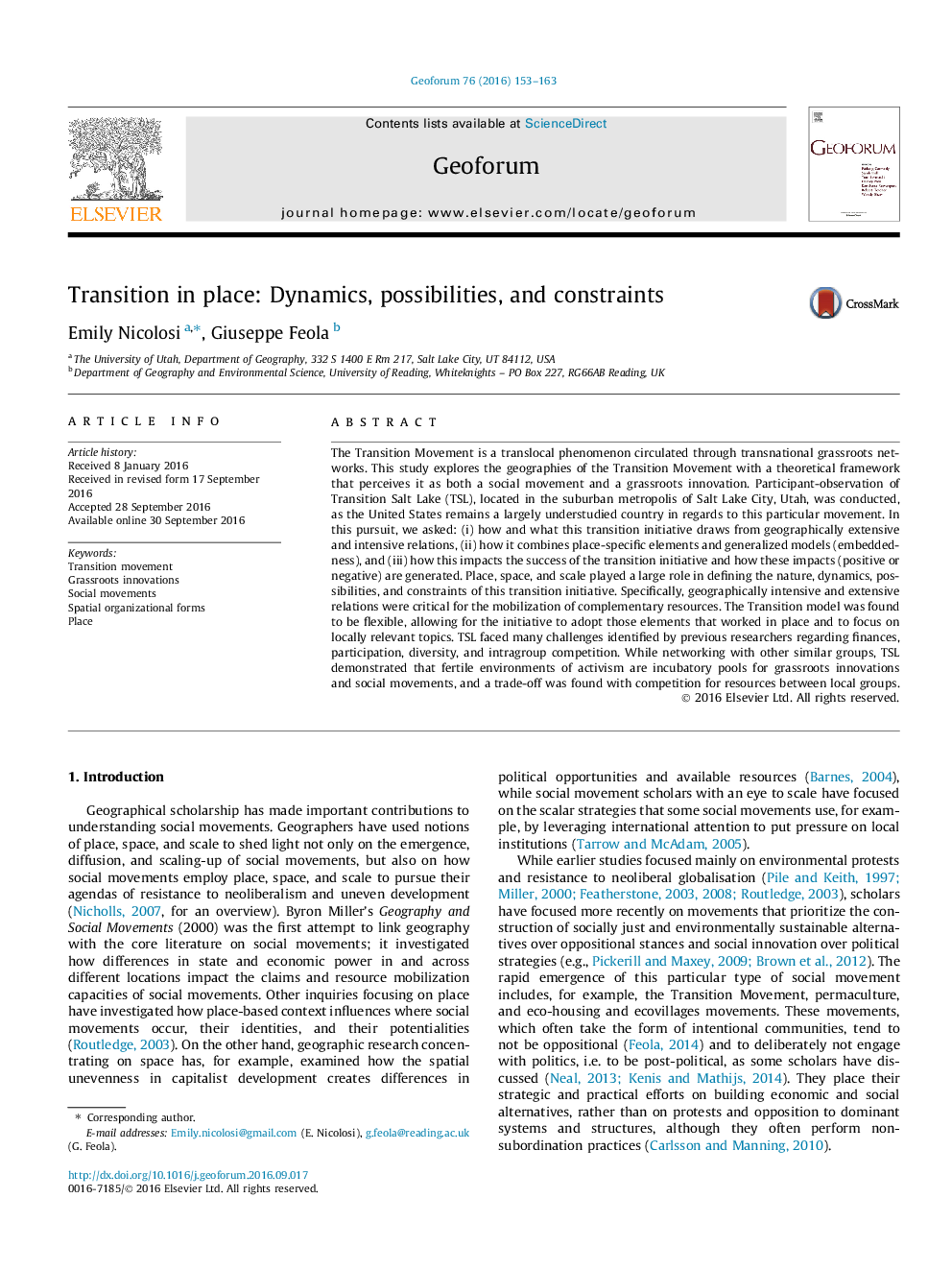| Article ID | Journal | Published Year | Pages | File Type |
|---|---|---|---|---|
| 5073476 | Geoforum | 2016 | 11 Pages |
â¢Geographically extensive and intensive relations provide complementary resources.â¢Transition initiatives combine place-specific elements and generalized models.â¢The Transition model is flexible, allowing elements to be adapted to local context.â¢Transition initiatives face similar constraints as other grassroots innovations.â¢Basins of activism are fertile ground for activism, but can create competition.
The Transition Movement is a translocal phenomenon circulated through transnational grassroots networks. This study explores the geographies of the Transition Movement with a theoretical framework that perceives it as both a social movement and a grassroots innovation. Participant-observation of Transition Salt Lake (TSL), located in the suburban metropolis of Salt Lake City, Utah, was conducted, as the United States remains a largely understudied country in regards to this particular movement. In this pursuit, we asked: (i) how and what this transition initiative draws from geographically extensive and intensive relations, (ii) how it combines place-specific elements and generalized models (embeddedness), and (iii) how this impacts the success of the transition initiative and how these impacts (positive or negative) are generated. Place, space, and scale played a large role in defining the nature, dynamics, possibilities, and constraints of this transition initiative. Specifically, geographically intensive and extensive relations were critical for the mobilization of complementary resources. The Transition model was found to be flexible, allowing for the initiative to adopt those elements that worked in place and to focus on locally relevant topics. TSL faced many challenges identified by previous researchers regarding finances, participation, diversity, and intragroup competition. While networking with other similar groups, TSL demonstrated that fertile environments of activism are incubatory pools for grassroots innovations and social movements, and a trade-off was found with competition for resources between local groups.
